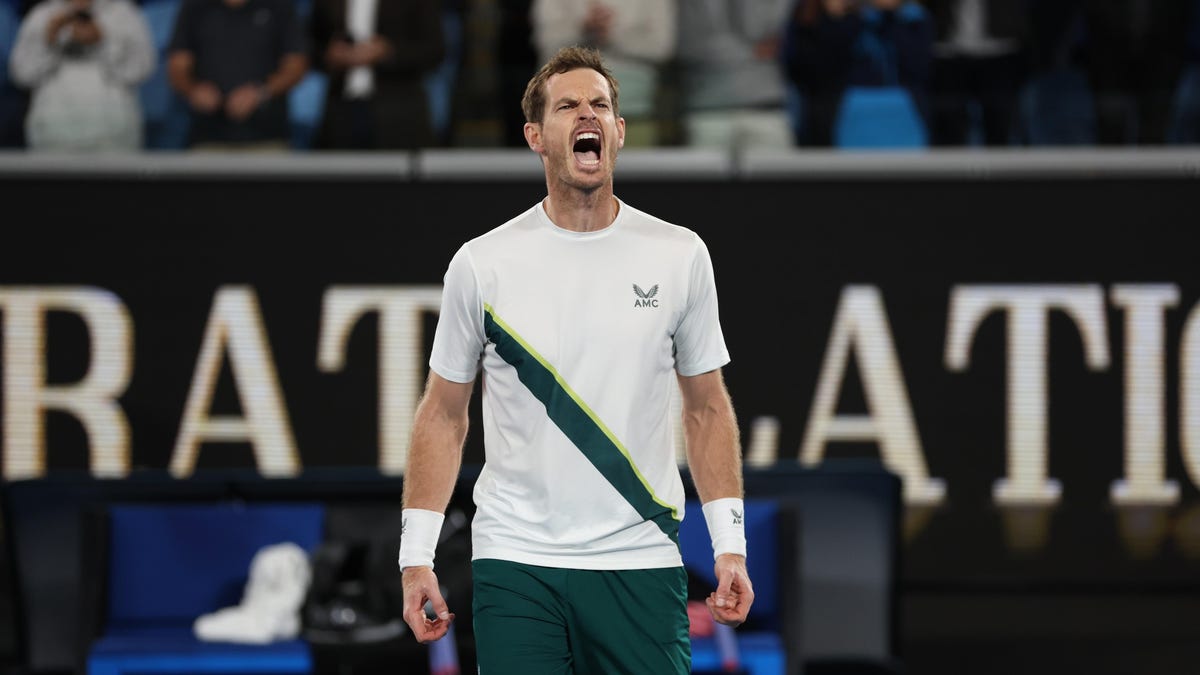Andy Murray must really love tennis. At least he’d better, considering what he puts himself through every match in the past few years and over his whole career. It’s like he can’t get off the court when there have definitely been times he should get off the court, both in making his wins easier and what his body is telling him. He’s just always out there.
In the immediacy, Murray is through to the third round of the Australian Open after outlasting, outliving, and/or outsuffering Thanasi Kokkinakis in five sets, and more poignantly five and a half hours. Murray came back from two sets down, which was the reverse of his first round Iron Man On A Hardcourt when he was up two sets on Marco Berrettini, blew that lead, and then pulled out the fifth. In just two matches, Murray has spent just about 10 hours on the court. Roger Federer, Rafa Nadal, and Novak Djokovic have won majors barely spending more time on the court than that over seven matches.
Why do Murray’s matches go so long?
Even at his peak, when Murray made the Big Three the Big Four, he always seemed to make things harder than they had to be. There was very little explosive about his game. He was one of the best returners the sport has ever seen, but his serve wasn’t so dominant that opponents couldn’t also at least get into his service games. His fitness and defense were only matched by those other three, and the solidity of his game made him a slightly diet version of Djokovic. But he had to be really cajoled into going for winners instead of extending points out until openings became unmissable or his opponents broke. It was always a grind.
His match against Kokkakanis was no different. The Aussie has a huge serve, which Murray was only able to break five times over five sets, but that doesn’t mean he didn’t have his opportunities. The match-swinging final break late in the fifth only came on his eighth break point in that game and the one before that, as he had blown a 0-40 lead in Kokkinakis’s previous service game. Overall he went just 5-for-22 with a chance to break. Murray just had to play more. There were 71 points in the match that went over nine shots. That’s a whole set’s worth, but this is how Murray goes. It just never stops.
His match with Matteo Berrettini only went so long because Murray fell into familiar habits when up two sets, trying to construct points to their perfection, no matter how long it took. Murray has always wanted to walk the ball into the net, as it were. But giving someone with the big guns that Berrettini has more time to find their game means they’re more likely to find their range, and Berrettini found the radar on his aggressiveness and buried Murray under an avalanche of winners. Only when Murray went for more than being a backboard in the deciding set did he pull it out.
G/O Media may get a commission

Up to $100 credit
Samsung Reserve
Reserve the next gen Samsung device
All you need to do is sign up with your email and boom: credit for your preorder on a new Samsung device.
This is the way
But then, it’s all a metaphor for Murray’s career. It’s never been easy. Murray has already retired once, when the pain in his hip simply became too much. And no one would have batted an eye if that had been it. He had three majors to his name, a handful of additional finals, more money than he’ll ever know what to do with, had ended the cartoonish wait for a British winner of Wimbledon which by itself assured that his name will live forever (funny how whenever he lost he was Scottish but when he won he was British, no?).
Murray was unsure the hip-resurfacing surgery he had would allow him back on the court, and again, it would have been far simpler had he not even tried. And yet he came back. He hasn’t been a threat to win any major, and likely won’t be again. He hasn’t been past the third round since his surgery. He doesn’t have to be out here, much like he didn’t have to make so many matches about what he can go through versus what his opponent can’t.
And yet, here he is, with his age and condition limiting his mobility just enough that it only folds him up in his grinding/suffering style that makes him happiest. He doesn’t quite have the time he developed when he was younger to finally start going for more and hitting more winners and shortening matches. He just has his ability to think and to run and to suffer. He makes tennis sufferball. We know how much he enjoys being miserable given the stories about his workouts. His 10 400m runs under 85 seconds 10 times with only the same amount of rest sounds like the eighth level of hell. Maybe that’s just the nature of Scotsmen. Have you seen the weather there?
Much like Venus Williams, Andy Murray is here for the purpose of being here. They both love playing, they both see no reason to stop. But whereas Williams keeps playing from what appears to be sheer joy, Murray is out here because it seems he can’t think of anywhere else to be and out of a near-psychotic sense of duty. He’s out here simply because he can’t leave, and thus he’s never not out here. Which, in Murray’s mind, is the same joy.



